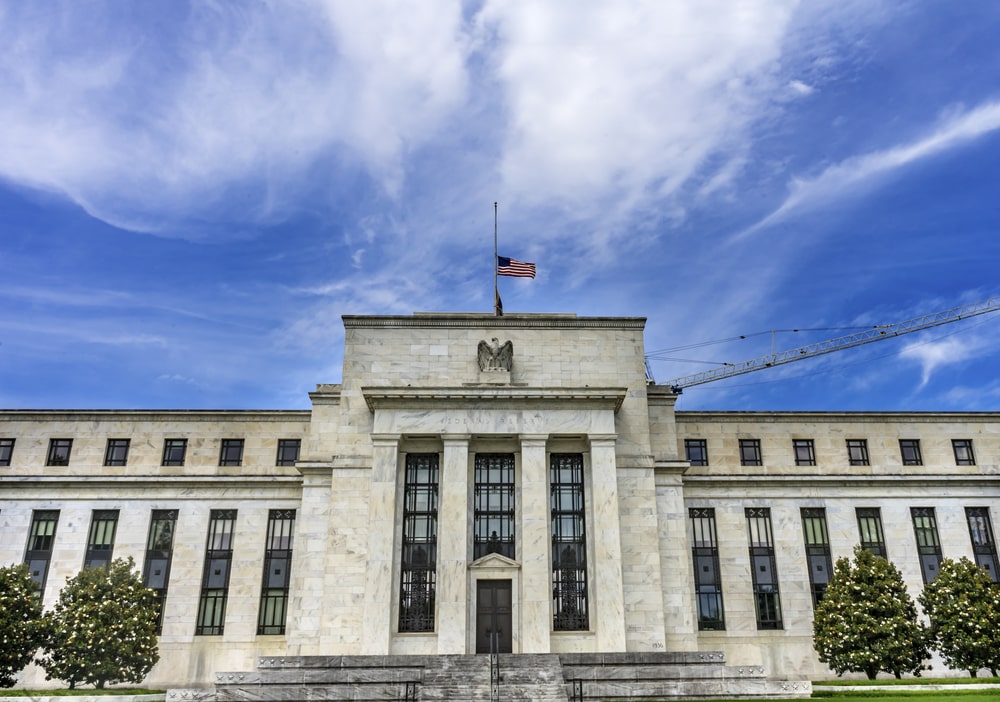
Economics & Growth | Monetary Policy & Inflation | US

Economics & Growth | Monetary Policy & Inflation | US
This article is only available to Macro Hive subscribers. Sign-up to receive world-class macro analysis with a daily curated newsletter, podcast, original content from award-winning researchers, cross market strategy, equity insights, trade ideas, crypto flow frameworks, academic paper summaries, explanation and analysis of market-moving events, community investor chat room, and more.
Fed officials paused their hiking campaign at the meeting on Wednesday. The FOMC surprised the markets and me by raising the median dot in its projection for the end-2023 rate by 50bp. But importantly, this does not signal hawkishness for three reasons (Chart 1).
First, Chair Powell could not explain convincingly how today’s pause with higher dots fits into the Fed’s strategy. The Fed stayed on hold today even though, in Powell’s own words ‘Inflation remains well above our longer-run 2% goal’, ‘inflation pressures continue to run high’, and ‘the process of getting inflation back down to 2% has a long way to go.’ Furthermore, the projections showed that the number of FOMC participants seeing core PCE risks as tilted to the upside had increased by two to 13, from 11 in March.
When asked why, in view of this assessment, the Fed was pausing, Powell replied that having moved ‘very quickly’, it now made ‘obvious sense to moderate our rate hikes.’ Powell did not offer an economic assessment of why the Fed’s ‘very quick’ moves had yielded only limited inflation results.
Conversely, when asked if the Fed needed additional hikes, Powell answered that ‘over the last six months core PCE had been at over 4.5%, far above our target and not really moving down.’
The combination of inaction and bleak but realistic assessment of inflation risks does not convey hawkishness.
Second, if the increase in the median dot was meant to convey that, despite pausing when inflation is high, the Fed was not actually dovish, the manoeuvre lacked credibility. At the outset of the presser, Powell ‘hastened to add that the FFR projections are not a Committee decision or plan’, but ‘the most likely scenario going forward’, which is the standard FOMC dot disclaimer.
Powell added that ‘we will continue to make our decisions meeting by meeting’ and indicated that no decision had been taken regarding the June meeting, which was ‘live.’
That every meeting is live is somewhat inconsistent with predicting two more additional hikes this year.
More broadly, the increase in the median dot does not convey much hawkishness because it is not accompanied by a solid economic narrative explaining why the Fed is not making progress on its inflation targets and what it plans to do about it.
Third, the Fed SEP has been accommodating progressively higher levels of inflation, while forecasting unemployment to remain close to cycle lows (Chart 2). The Fed has now lifted its forecast for end-2023 core PCE to 3.9%, almost twice as high as its inflation target!
These forecasts speak louder than Fedspeak or dots on the respective weights given to the employment and inflation parts of the Fed mandate.
Bottom line, a dovish central bank is not one that never raises interest rates but rather is a central bank that requires overwhelming evidence that its policies are not working to step up its inflation fight. The limited responsiveness of Fed policies to high and persistent inflation in my view meets the definition of dovishness.
Based on the presser, I see two more hikes as likely this year. Powell repeatedly stressed the importance of slowing the pace of hikes, which makes me think he likely wants to move to a hike every other meeting from previously a hike at each meeting. If so, hikes in July and November are likely (Chart 3). This compares with markets pricing only a 60% chance of a hike in July and one in December.
For the Fed to hike by more than 50bp would require inflation to move to a higher path, which seems unlikely without an inflation shock as inflation has been stable (May 2023 CPI: Still High and Stable Inflation).
That said, even two more hikes would not fundamentally change the inflation and growth picture, since they would leave the FFR well below the Taylor rule. My current estimate of the Taylor rule is 7 to 8% (Fed Monitor: Dovish Domination). This suggests inflation and growth may not have much downside from here.
Nevertheless, as long as market inflation expectations remain stable, and today’s Fed presser had no significant impact on BEs, continued strong growth and a predictable and, overall, dovish Fed, would be very supportive of risk assets.
Spring sale - Prime Membership only £3 for 3 months! Get trade ideas and macro insights now
Your subscription has been successfully canceled.
Discount Applied - Your subscription has now updated with Coupon and from next payment Discount will be applied.